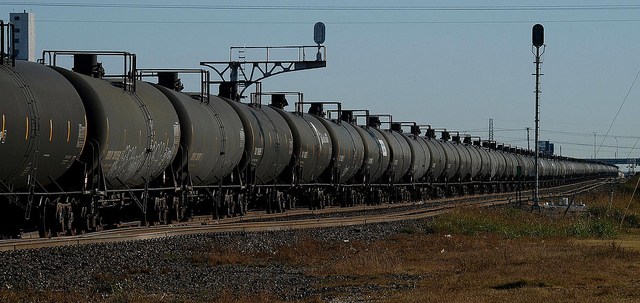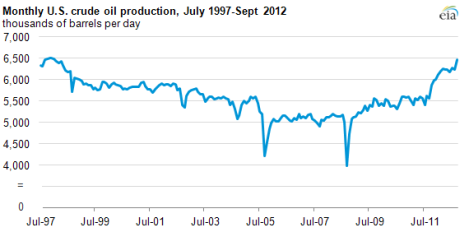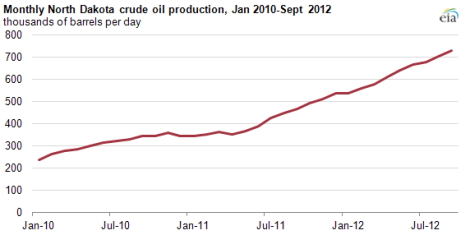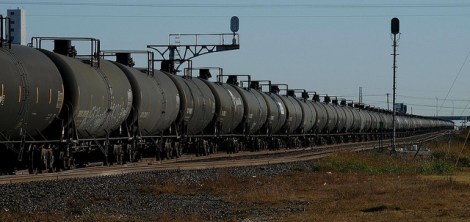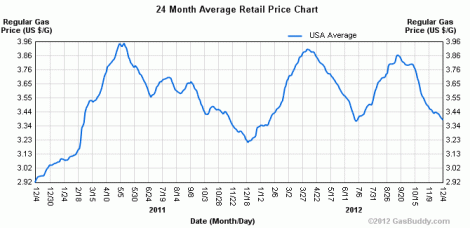Another reminder of how much Barack Obama hates oil: U.S. production reached its highest point in 14 years in September, rolling out 6.5 million barrels a day.
Much of that is thanks to a massive increase in production in North Dakota as oil companies use hydraulic fracturing to extract oil from the Bakken Shale formation.
We’ve previously noted how this is transforming the state for the worse — crime, housing prices, spills. But today The Guardian describes those changes in the context of one North Dakota family, the Jorgensons, who’ve lived in the state since 1979.
[The oil wells] began appearing in 2006, and within just a few years dominated the area landscape. Today at least 25 oil wells stand within two miles of the Jorgensons’ home, each with a pump, several storage tanks, and a tall flare burning the methane that comes out of the ground along with the petroleum.
Like most people in North Dakota, the Jorgensons only own the surface rights to their property, not the subsurface mineral rights. So there was nothing they could do when, in May 2010, a Dallas-based oil company, Petro-Hunt, installed a well pad on the Jorgensons’ farm, next to a beloved grove of Russian olive trees. First, heavy machinery brought in to build the well pad and dig a pit for drilling wastes took out some trees. Then the new hydrology created by the pad drained water away from the olives, while others became exposed to the well’s toxic fracking fluid. Some 80 trees were dead by the summer of 2011.
The Jorgensons’ story gets progressively worse. Another well, even closer to the home, creates a constant, unpleasant smell. In August, a methane flare went out, meaning that toxic, flammable gas was permeating the area — and they had no idea who to contact to resolve the problem.
It seems clear that the state is more interested in facilitating extraction than meeting the needs of even long-time residents. One small change went into effect last year, but doesn’t do much good.
In 2011, North Dakota began requiring oil companies to negotiate with surface rights owners who claimed present and probable future damages to their land, but the state didn’t require them to reach a settlement. Those landowners who have secured settlements normally receive about $1,750 an acre per year in damages. One White Earth rancher who refused to give her name because she worried about “violent retaliation” by oil company workers (she said cattle in the area have been shot by oil workers) says: “You either take the money or they take it [the land] from you anyway by court order.”
“People feel powerless,” says Derrick Braaten, a Bismarck attorney who represents surface-rights owners who are battling oil companies. “The oil company is coming on your property. You don’t have the ability to protect the land. You push the monster back, but at a certain point it’s gonna walk on top of you.”
At the end of the day, this rampant push for more and more oil extraction is worth it, though. It’s worth the damage to property, the health issues, and the disruptions to families. I mean, just look how consistently gas prices have plummeted as we’ve produced more domestic oil.

